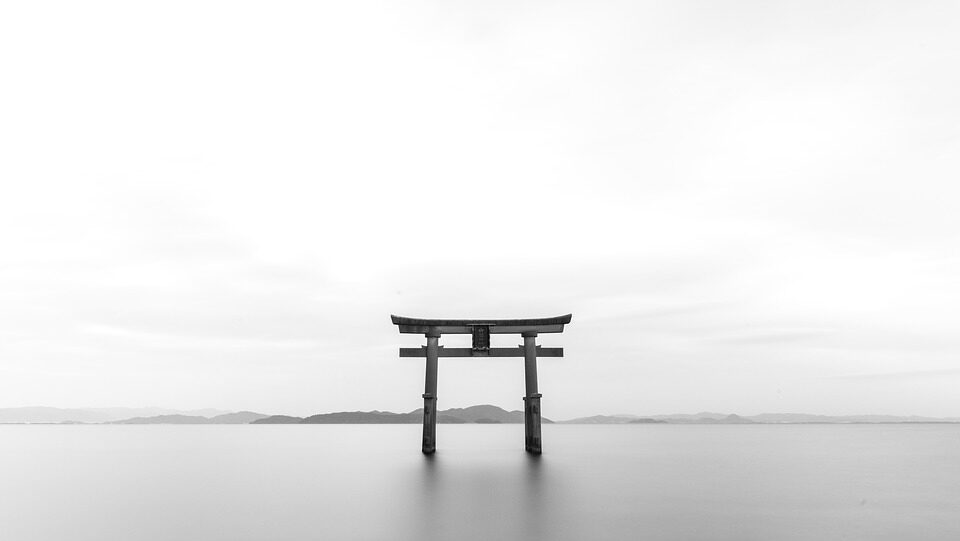【What is Kojiki(古事記)?】The contents of Japan’s oldest historical book are explained in an easy-to-understand manner!
This page explains
the contents of the Japanese history book “Kojiki(古事記)” in an easy-to-understand manner.
This page provides an easy-to-understand explanation of the contents of the Japanese history book Kojiki, under the theme “What is the Kojiki?
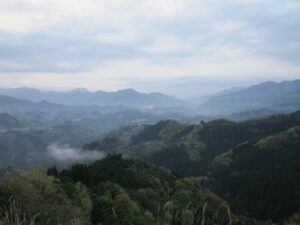
First, let’s start with what kind of book “Kojiki(古事記)” is.
目次
◎What is “Kojiki”?
What kind of history book?
The “Kojiki(古事記)” is Japan’s oldest extant history book.
While the “Nihon-Shoki(日本書紀)” is considered the official history of the country, the “Kojiki” takes the form of a historical narrative.
The “Kojiki” is a compilation of two historical books, the “Teiki(帝紀)” and the “Kyuji(旧辞)”, which were handed down to the Imperial Court.
(It is said that “Teiki” is a record of the emperor’s genealogy, and “Kyuji” is a compilation of oral traditions and old events such as myths and legends. It seems that there were several types of each.)
The “Kojiki” and the “Kyuji” were written before the “Kojiki”, and none of them have survived, but the “Kojiki” has survived.
For the difference between “Kojiki” and “Nihon-shoki”, see ↓
What are “Kojiki” and “Nihon-Shoki”? A simple explanation of the differences between the “Kiki”
When was it created?
It was completed in the 5th year of Wado (和銅, 712).
The work began on the order of Emperor Tenmu(天武天皇), the 40th emperor of Japan, and was temporarily suspended when the emperor collapsed.
However, when the third emperor, Emperor Genmei(元明天皇), ascended to the throne in 707, she issued another order, and the work was completed as one of the cultural projects to celebrate the completion of Heijo-kyo(平城京).
Why was it created?
During the reign of Emperor Tenmu, the 40th emperor of Japan, the Tang Dynasty, a military power, was developing in nearby China (the continent), and Japan was under pressure to unify the nation.
Therefore, the Imperial Court began to produce two types of books as part of the national project at the order of Emperor Tenmu.
The “Kojiki” was created to show the legitimacy of the imperial family for the domestic market.
Due to the characteristics of “for domestic use” and “for overseas use,” the “Kojiki” is written in a unique language that combines the “Yamato language” used by the ancient Japanese people and Chinese writing, while the “Nihon-Shoki” is written purely in Chinese.
See the following page for details↓
Who is the author?
The author (or editor) was a nobleman named “Oono-Yasumaro(太安万侶)”.
The Teiki and Kyuji, which had been handed down to the imperial court, were recited by a Toneri(舎人, those who serve at the side) named “Hieda-no-Are(稗田阿礼)” on the orders of Emperor Tenmu, and recorded by Oono-Yasumaro on the orders of Emperor Genmei three generations later.
It may be said that the Kojiki was the joint work of two scholarly geniuses, “Hieda-no-Are, who had a good memory, and Taian Man’monk, who excelled in writing.
Oono-Yasumaro later participated in the compilation of the Nihon-Shoki.
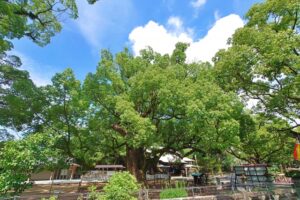
◎Contents of the “Kojiki”
What exactly is the “Kojiki”?
From now on, we will discuss the specific contents.
This site aims to summarize the contents of the “Kojiki” in an easy-to-understand manner, so that you can understand the important parts without having to read a long historical narrative.
You can find most of the contents of the “Kojiki” here!
Content of the Kojiki “Summary”
First, I would like to summarize the contents of the “Kojiki”.
If I were to force myself to sum up the contents of the “Kojiki” in a few words, “It begins with the birth of the island nation of Japan, the goddess Amaterasu-Omikami(天照大御神) becomes the supreme deity, her grandson descends from the heavenly realm to the earth to rule Japan, and his descendants establish the nation, become emperors, and the emperor family continues.”
The story begins with an episode of the gods, and becomes a human story when the first Emperor Jinmu(神武天皇), a descendant of the supreme god, appears, and it continues until the 33rd Emperor Suiko(推古天皇).
(It is thought that the reason why the content is up to the 33rd Emperor Suiko is because the “Teiki”, which was used as a reference, was a record up to that point.)
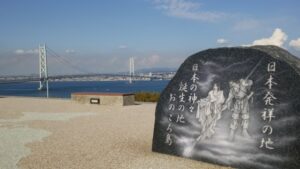
There are a number of famous stories in the story, such as “the myth of Ame-no-Iwato(天岩戸神話)”, “the slaying of Yamata-no-Orochi”, and “the legend of the Kusanagi-no-Tsurugi of Yamatotakeru-no-Mikoto”, which is basically a single historical tale.
Some of the stories are historical facts, while others are too unrealistic to be mythical.
In fact, the content is not difficult to understand, and the stories are all very familiar.
Although the purpose of the book is to “show the legitimacy of the emperor”, there are parts of the text that show the thoughts of the ancient Japanese, which makes it interesting enough to read.
Table of Contents for the “Kojiki”
Here is the “Table of Contents” of the “Kojiki”.
By looking at the table of contents, you can get a good idea of what is written in the Kojiki.
The “Kojiki” is divided into three volumes: “Upper Volume”, “Middle Volume”, and “Lower Volume”.
The episodes are divided into several major titles, so I have summarized the general contents of the episodes in bullet points.
I’ve also included more detailed introductions to some of the more famous episodes on separate pages.
I’ve also tried to keep it short and easy to understand.
You can read them by clicking on the “Table of Contents” link here, so please have a look!
Foreword
・Foreword by Oono-Yasumaro
First volume
①The Beginning of Sky and Earth
・Emergence of the “Zoka-sanshin(造化三神)”
・”Umashiashikabihikozi-no-Kami(宇摩志阿斯訶備比古遅神)” and “Amenotokotachi-no-Kami(天常立神)”
・Kamiyo-Nanayo(神世七代)
②Izanagi-no-Mikoto and Izanami-no-Mikoto
・The Birth of a Nation by “Izanagi-no-Mikoto(伊邪那岐命)” and “Izanami-no-Mikoto(伊邪那美命)”
・The birth of the gods, the birth of “Hinokagutsuchi-no-Kami(火之迦具土神)”, and the death of Izanami-no-Mikoto
・Visit to the “Yomi-no-Kuni(黄泉国)” by Izanagi-no-Mikoto
・purification(禊祓い, Misogi-barai) of Iwanagi-no-mikoto
・The birth of “Mihashira-no-Totokiko (三貴子, Amaterasu-Omikami, Susanoo-no-Mikoto and Tsukuyomi-no-Mikoto)
③Amaterasu-Omikami and Susanoo-no-Mikoto
・Susanoo-no-Mikoto(須佐之男命) heads for Takamagahara(高天原)
・Ukei(誓約) of Amaterasu-Omikami(天照大御神) and Susanoo-no-Mikoto
・Susano-no-Mikoto’s Violence in Takamagahara
・Legend of Ame-no-Iwato(天岩戸伝説)
・Banishment of Susano-no-Mikoto
・defeating Yamata-no-Orochi(八俣遠呂智)
・The Marriage of Susano-no-Mikoto
④Nation building by Okuninushi-no-Kami
・Legend of the White Rabbit of Inaba(稲羽の白兎伝説)
・The Trials of Okuninushi-no-Kami(大国主神)
・The Nation Building of Okuninushi-no-Kami and His Descendants
⑤Nation surrendering by Okuninushi-no-Kami
・Ame-no-Wakahiko(天若日子), from Takamagahara to earth
・Dispatch of Takemikazuchi-no-Kami(建御雷神)
・A contest of strength between Takemikazuchi-no-Kami and Takeminakata-no-Kam(建御名方神)
・Nation surrendering and the beginning of Izumo-Taisya(出雲大社)
⑥Tenson-Korin of Ninigi-no-Mikoto
・ The descent of Ninigi-no-mikoto(邇邇芸命), Tenson (The grandson of Amaterasu-Oomikami)
・The marriage of Sarutabiko-no-kami(猿田毗古神) and Amenouzume-no-Mikoto(天宇受売命)
⑦Umisachibiko and Yamasachibiko
・Lost fish hook
・Yamasachibiko(山佐知毘古), to the Palace of the Sea God
・Surrender of Umisachibiko(海佐知毘古)
・Birth of Ugayafukiaezu-no-Mikoto(鵜葺草葺不合命) and breaking of taboos
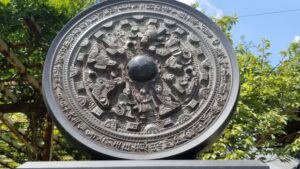
Middle volume
①Jinmu’s Eastern Expedition and the Eight Generations of Kesshi
・Start of the Eastern Expedition of Kamuyamato-Iwarebiko-no-Mikoto(神倭伊波礼毘古命, Emperor Jinmu)
・From Kumano to Yamato, the Guidance of Yatagarasu(八咫烏)
・To rule Yamato
・The decisive battle with Tomibiko(登美毘古) and the enthronement of Emperor Jinmu in Kashihara (the founding of Japan)
・the Eight Generations of Kesshi(欠史八代)
②Emperor Sujin and Emperor Suinin
・The reign of the 10th Emperor Sujin(崇神天皇) and the Oomononushi-no-Kami(大物主神) of Mount Miwa(三輪山)
・Rebellion of Takehaya-Niniyasubi-no-Mikoto(建波邇夜須毘古命)
・The accession of Emperor Suinin(垂仁天皇) and the rebellion of Sahobiko-no-Miko(沙本毘古王)
・The Silent Prince, Homuchiwake-no-Mikoto(本牟智和気命) and visit to Izumo Taisha
③Expedition of Yamatotakeru-no-Mikoto
・Oousu-no-Mikoto(大碓命) and Falsehood of the Two Daughters of Mino(美濃)
・Defeat of Ousu-no-Mikoto(小碓命, later to become Yamatotakeru-no-Mikoto)’s elder brother , western conquest, and birth of Yamatotakeru-no-Mikoto(倭建命)
・Yamatotakeru-no-Mikoto’s attack on Izumo
・The Eastern Expedition, the Legend of the Kusanagi-no-Tsurugi, and the Death of Ototachibana-no-Hime(弟橘比売命)
・The Love Affair with Miyazu-Hime(美夜受比売) and the Last Days of Yamatotakeru-no-Mikoto
・Legend of the white bird
④The Activities of Empress Jingu
・The Three Korean Expeditions of the Empress jingu(神功皇后)
・The Revolt of Kagosaka-no-Miko(香坂王) and Oshikuma-no-Miko(忍熊王)
・Homudawake-no-Mikoto(品陀和気命, Later Emperor Ojin) and Kehi-no-Ookami(気比大神)
⑤Reign of Emperor Ojin
・The 15th Emperor Ojin(応神天皇) and Yakawa-Hime(矢河枝比売)
・Kaminaga-Hime(髪長比売) and Oosazaki-no-Mikoto(大雀命, Later Emperor Nintoku)
・Arrival of the Baekje people
・The rebellion of Ooyamamori-no-Mikoto(大山守命)
・Arrival of Ame-no-Hiboko(天之日矛)
・The Story of the God of Autumn and the God of Spring
Last volume
①Emperor Nintoku and Iwanohime-no-Mikoto
・The Legend of Emperor Nintoku(仁徳天皇) the 16th, the Holy Emperor
・Kurohime(黒日売) of Kibi
・Journey of Iwanohime-no-Mikoto(石之日売命)
・Yata-no-Wakiiratsume(八田若郎女) and Yatabe(八田部)
・Hayabusawake-no-Miko(速総別王) and Medori-no-Himemiko(女鳥女王)
・Longevity of Takeuchi-no-Sukune(建内宿禰)
②Emperor Nintoku’s Children
・The Revolt of Sumie-no-Nakatsumiko(墨江中王)
・Activities of the 18th Emperor Hanzei(反正天皇)
・The 19th Emperor Ingyo(允恭天皇), and Kukatachi(盟神探湯)
③Kinashinokaru-no-Miko and Emperor Anko
・The downfall of Kinashinokaru-no-Miko(木梨之軽王)
・Accession to the throne of the 20th Emperor Anko(安康天皇) to the throne and rebellion of Mayowa-no-Miko(目弱王)
・The destruction of the Katsuragi-no-Tsubura(葛城都夫良)
・The Last Day of Ichinobe-no-Oshihanomiko(市辺之押歯王)
④Age of Emperor Yuryaku
・The 21st Emperor Yuryaku(雄略天皇) and Wakakusaka-no-Miko(皇后若日下王)
・The long-awaited Hiketabe-no-Akaiko(引田部赤猪子)
・Yoshino(吉野) girl
・Hitokotonushi-no-Kami(一言主神) of Katsuragi(葛城)
・Waka of Mie-no-Uneme(三重の采女)
⑤Emperor Kenzou and Emperor Ninken
・The search for an heir and the discovery of two princes.
・Hegri-no-Shinobi’s(平群志毘) downfall
・The 23rd Emperor Kenzou(顕宗天皇) and the Old Woman Okime(置目)
・Revenge of Emperor Kenzou
・From the 24th Emperor Ninken(仁賢天皇) to the 28th Emperor Senka(宣化天皇)
・From the 29th Emperor Kinmei(欽明天皇) to the 33rd Emperor Suiko(推古天皇)
My personal impressions of the contents of the “Kojiki”
There are many reasons why people come into contact with “Kojiki”.
Such as “for education,” “because They’re interested in Japanese gods,” “to know what kind of history book starts from myths,” “to enjoy it as a story”.
But old books seem difficult to read, and even if you want to know about them someday, it’s hard to get your hands on them.
That’s why I created this page.
There are many different translations of the “Kojiki”, and it depends on the text of the translation, but when you actually read it, the content is not difficult at all.
In fact, the stories are easy to understand, and many of them are very simple.
Sometimes it’s unbelievable that even gods can be so childish, and some events that give the impression of being ridiculous, which cannot be found even in modern novels.
I think that the difference in values between the ancients and the modern people is the main reason for the confusion.
For example, the actions of the hero “Yamatotakeru-no-Mikoto” may seem like a first class criminal or meanness in today’s sense of values.
I think this is because the ancients or the imperial court of that time had a different view of heroes.
Or, there are many parts that seem absurd, but contain very deep Japanese lessons.
The original text of “Kojiki” seems to be very simple, so some parts that are common knowledge to the ancients are left out, or even difficult to understand.
However, I think it is possible to read and compare the different translations and find profound lessons in the contents, and there is no limit to how much you can learn by reading deeply.
In any case, it is very interesting, and moreover, it is considered to be the official history book of Japan, and it is still the most important book.
I would be more than happy if some of you could learn a little more about “Kojiki” from this page, or if you could become more interested in “Kojiki” or “Japanese history”.
